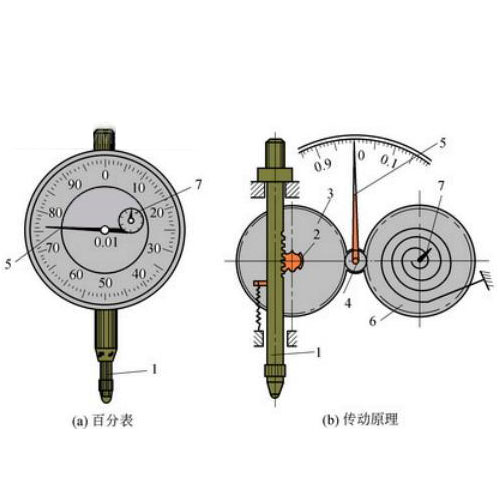Dial gauge structure principle and reading method
Structural principle
The dial indicator is a kind of comparative gauge with high precision. It can only measure relative values. It can not measure absolute values. It is mainly used to measure shape and position errors. It can also be used for precision alignment when mounting workpieces on machine tools. The reading accuracy of the dial gauge is 0.01 mm. The structural principle of the dial indicator is shown in the figure. When the measuring rod 1 moves up or down by 1 mm, the large pointer 5 is rotated one turn by the gear transmission system, and the small pointer 7 is turned into one grid. The dial has 100 equal divisions on the circumference, and the reading value of each grid is 0.01 mm. The small pointer reads 1mm per division. The amount of change in the pointer reading during measurement is the amount of dimensional change. The dial can be rotated so that the large pointer is aligned with the zero line when measuring.
Reading method
The reading method of the dial indicator is: first read the tick mark rotated by the small pointer (ie, the millimeter integer), then read the tick mark (that is, the decimal part) rotated by the large pointer, and multiply by 0.01, then add the two, that is, The measured value is obtained.

Dial indicator

Concerned about surprises
Label: dial indicator structure principle reading pointer dial
Previous: Correct use and maintenance precautions for spiral micrometer Next: Gauge: definition of centimeters ranking and introduction of famous brands
Aluminum Fence Panel,Decorative Aluminum Fence Panel,Used Chain Link Fence Gates
Iron Fence,Aluminum Fence Co., Ltd. , http://www.nbaluminumfence.com
